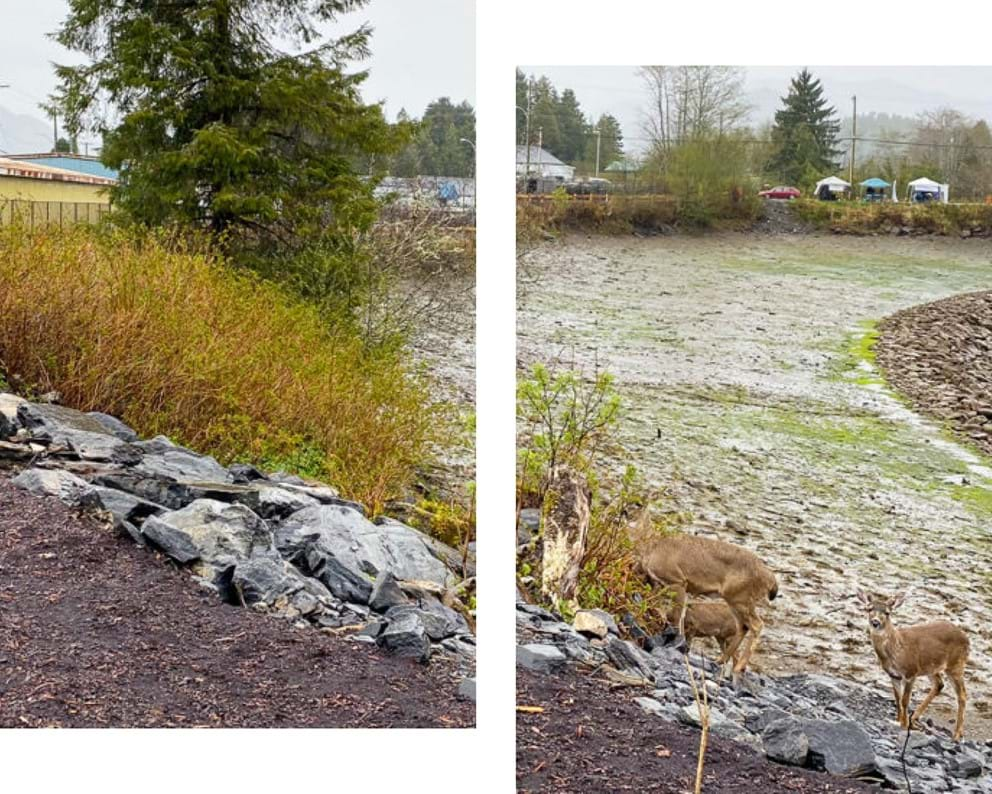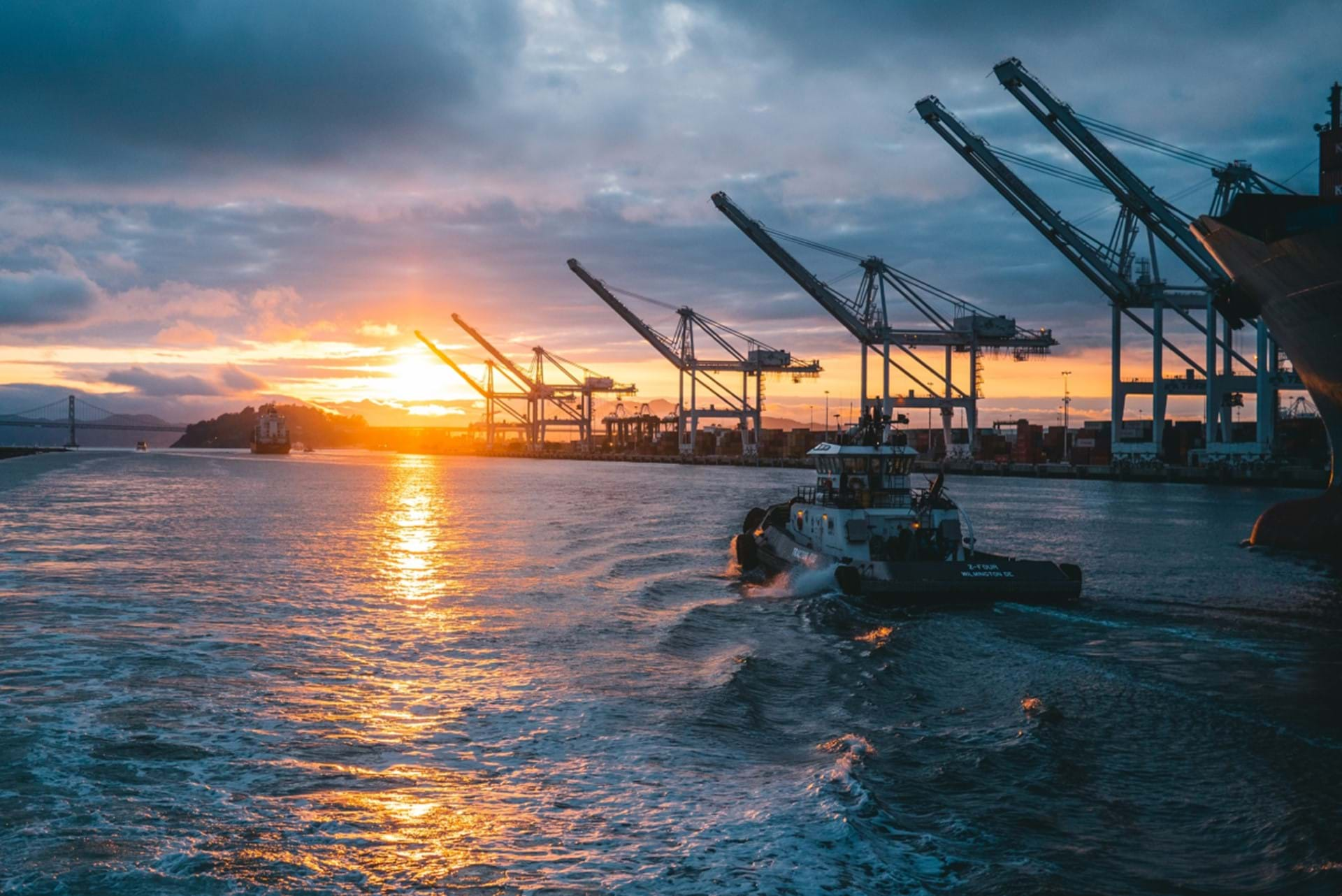
Above and Beyond — Landside participants show leadership
LeadershipPublic participation, innovation, revitalization, and habitat restoration on the agenda
This section features Green Marine participants that have gone beyond the environmental certification program’s already demanding requirements to show true change leadership in other innovative ways to further improve sustainability and/or community engagement.
Montreal Port Authority
The Montreal Port Authority (MPA) has reached out to the public and to port stakeholders to help imagine the Port of Montreal in 2030 by sharing their ideas and participating in key discussions.
“While the Port of Montreal is an economic driver for Canada by facilitating imports and exports for various businesses, it is at its core a public service for Montrealers, as well as for businesses and consumers in Quebec and Ontario,” says Mélanie Nadeau, the MPA’s Vice-President of Public Affairs and Community Relations.
“Our port is weaved into the city’s fabric with some 30,000 civic addresses that we consider as our neighbours,” Nadeau adds. “So, we’re determined to be pro-active – a true leader – in involving our community to contribute to our mutually beneficial future in a harmonious co-existence.”
The goal is to incorporate feasible ideas into the MPA’s strategy plan leading up to the port’s 200th anniversary. “While 2030 might seem years away, it’s really not far off,” Nadeau says. “That’s why we’re seeking this fresh insight now as to what we might be able to do better.”
Montreal’s public and other port stakeholders were invited to share their perspectives in an online survey regarding one or all four themes: the environment, the society, the economy, and innovation.
“By having distinct themes, we’re ensuring that each of these important aspects is receiving proper attention even if we have to cross-reference ideas later because they involve more than one area,” Nadeau explains.
The survey initiated more than 150 responses and has led to the formation of several discussion groups. “We’ll gather everyone in early June to summarize all of these ideas and get final input,” Nadeau says. “We’ll then no doubt use a number of those ideas to help us to prioritize our strategic plan leading up to 2030.”
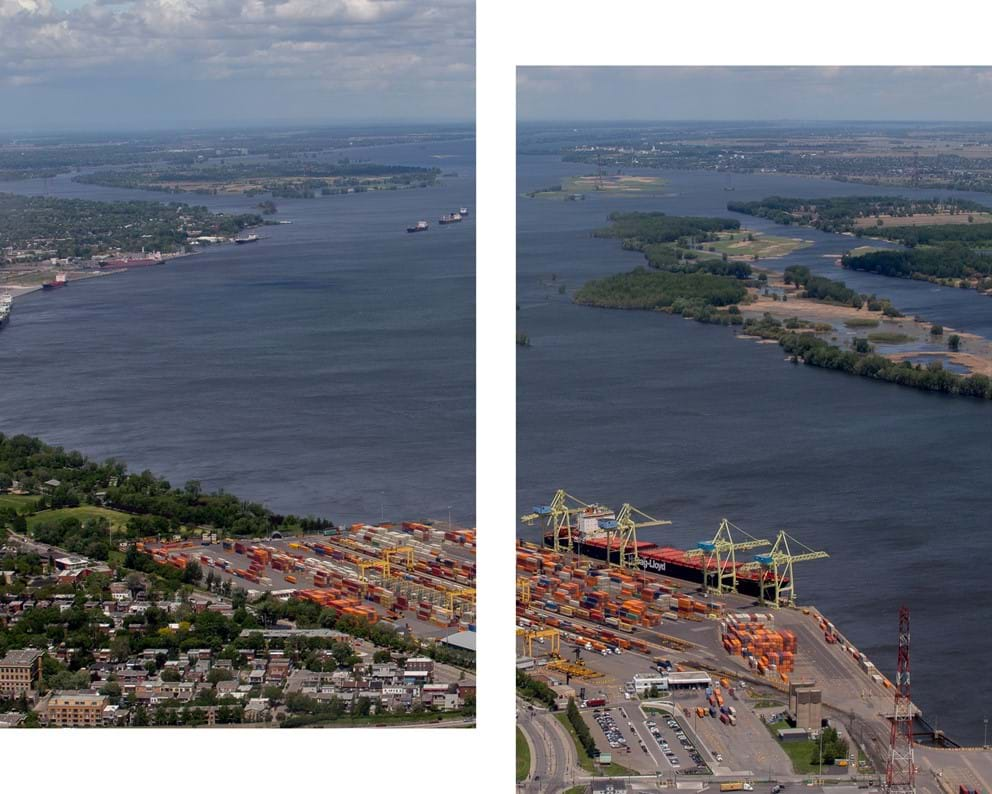
Port of Everett
The Port of Everett continues to clean up and revitalize its waterfront properties with current focus on its international seaport area where the $36-million Norton Terminal will open later this year.
“Working in partnership with Washington State’s Department of Ecology, we holistically and strategically dovetail cleanup, habitat restoration and property redevelopment for port use or in partnership with private stakeholders,” says Erik Gerking, the port’s Director of Environmental Programs.
The 40-acre (16-hectare) Norton Terminal property bought in 2019 is among several former mill sites being cleaned up and environmentally rehabilitated under the Washington State Puget Sound Initiative.
“We’ve also invested more than $150 million to modernize our maritime facilities over the past decade to maximize land reuse, green the seaport, and expand cargo-handling capacities,” says Catherine Soper, the port’s Communications and Marketing Director. “With the current supply chain issues, we’re bringing this new cargo terminal online at a time of great demand.”
Renewing existing waterfront space is imperative. “This is an urban port constrained by geography,” Gerking explains. “And this is the last piece of industrial waterfront next to deep water and our existing terminals.”
With its balanced approach, the port also operates a large public marina and mixed-use amenities that make the area a popular destination. As part of the Norton Terminal project, nearly $600,000 has been put toward improving the state’s largest boat launch. The funds are part of a voluntary policy dedicating 2% of the cost of every infrastructure project within the shoreline zone to better public access.
A leader in habitat restoration, the Port of Everett is completing a 350-acre (142-hectare) estuary project as part of a mitigation bank that will benefit salmon and other wildlife. “Historically, a lot of this estuary had been diked to create farmland,” Gerking shares. “It’s being restored as tidal marshland where juvenile salmon can grow strong enough to survive the Pacific Ocean.”
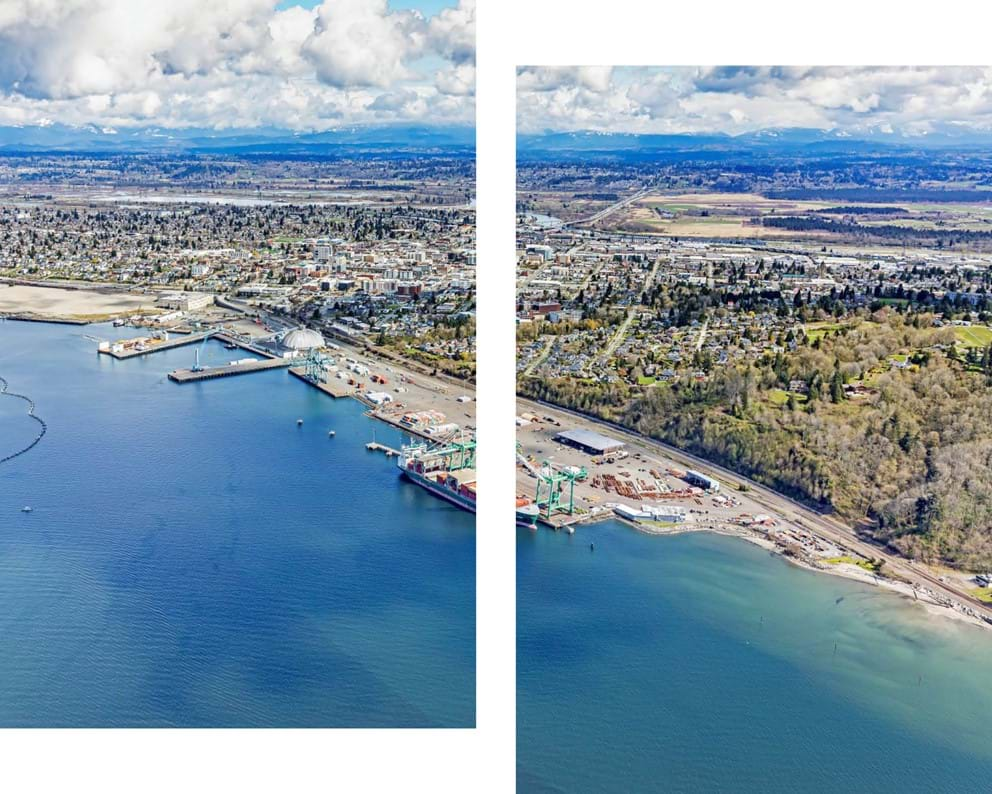
Port of Corpus Christi Authority
Building on its current leadership as a premier U.S. energy gateway, the Port of Corpus Christi Authority (PCCA) is exploring the greater opportunities for the production of hydrogen and its derivatives within the port’s vicinity.
“As we re-evaluate our place in the global energy market to retain our prominent position during its major transition, we have been vocal about our aspirations as a land-managing port to work with private interests to emerge as a world-leading hub for hydrogen,” says Jeff Pollack, PCCA’s Chief Strategy and Sustainability Officer.
PCCA is collaborating with the (U.S.) National Energy Renewal Lab (NERL) on technical aspects of deploying hydrogen projects from diverse feedstocks, including natural gas, with the related capture of carbon for storage or use.
A study completed in May by NERL looked at the potential for supplying hydrogen production and the demand for such energy within a 50-mile (80-kilometre) radius of the port. “It’s clear the aggregate demand from international markets to which we’re already connected is so much larger than regional demand,” Pollack says. “This reaffirms our mission in linking commercial interests to these foreign markets.”
The immense foreign interest has prompted the PCCA to undertake a second scope of analysis by NREL to look at coupling hydrogen production with offshore wind-power turbines.
“We’re analyzing about seven different scenarios that vary from hydrogen production on individual turbines to centralized production on an offshore platform to onshore transfer and storage,” Pollack shares. “The most distinguishable feature of this analysis is that we’re looking at this at a deployable scale rather than assume that a small pilot project could be ramped up.”
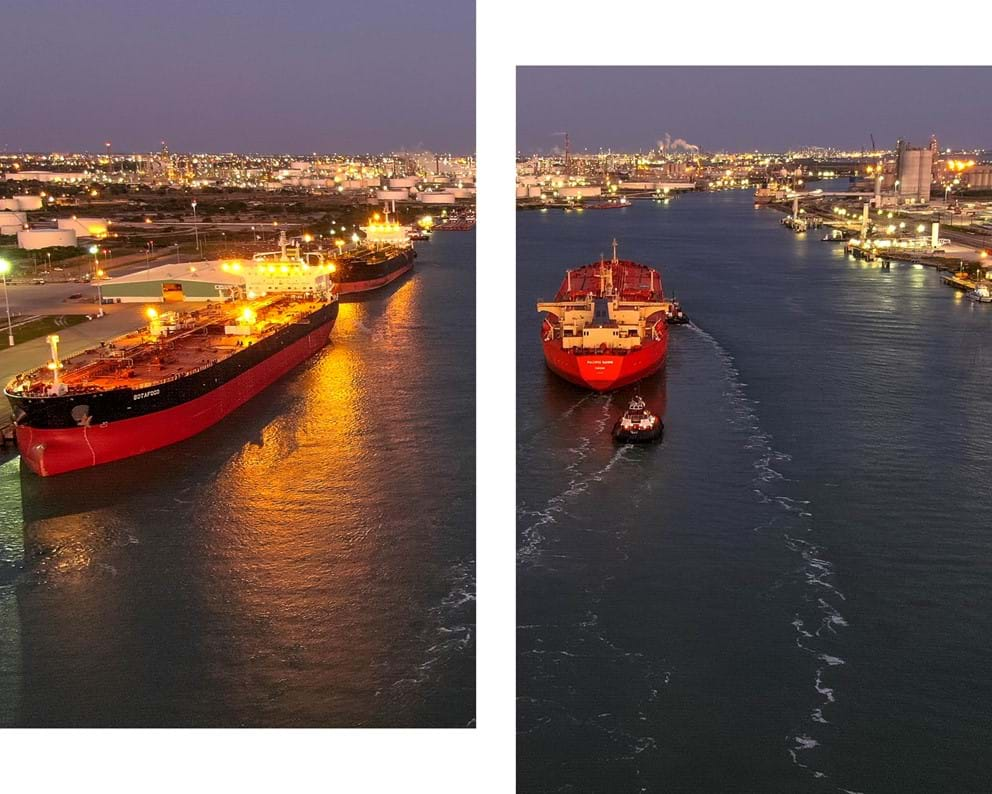
Termont
Termont, LOGISTEC’s intermodal terminal operator at the Port of Montreal, began converting several diesel-powered trucks to diesel-electric hybrids four years ago to reduce greenhouse gas (GHG) emissions. With financial support from the Quebec government, Termont became the first port operator in the world a year later to convert its entire fleet to hybrid vehicles.
“Electrification is a key project for the future of Termont and our industry,” states Julien Dubreuil, Termont Montreal’s general manager.
By converting all 57 of its terminal-operating tractors into diesel-electric hybrids, Termont has eliminated up to 30 tonnes of GHG emissions per vehicle annually, significantly improving air quality.
Using similar automatic start-and-stop technology now found in many cars, the engine shuts off whenever the vehicle is brought to a stop, which eliminates the emissions that would usually be released while the tractor is operating from a standstill position. Those operational maneuvers are now done with the vehicle’s cleaner electric power.
Based on the data collected during the initiative’s pilot phase, engine-on time was reduced by 46%, resulting in 26% fuel savings along with reductions in CO2, NOX and other fine particulate matter.
Other sustainability efforts include the addition of a fourth ship-to-shore crane at its Viau terminal to further improve vessel loading and unloading efficiencies. The company has also increased its rail capacities and sustainability by installing a rail-mounted-gantry (RMG) crane to replace diesel-powered cranes that emit greater GHG emissions. The RMG crane facilitates direct transfers via the terminal’s rails and container stack, reducing the need for trucks to move stacked containers.
“Termont continues to push for more efficiencies that are good for customers, the community and the environment,” Dubreuil adds.
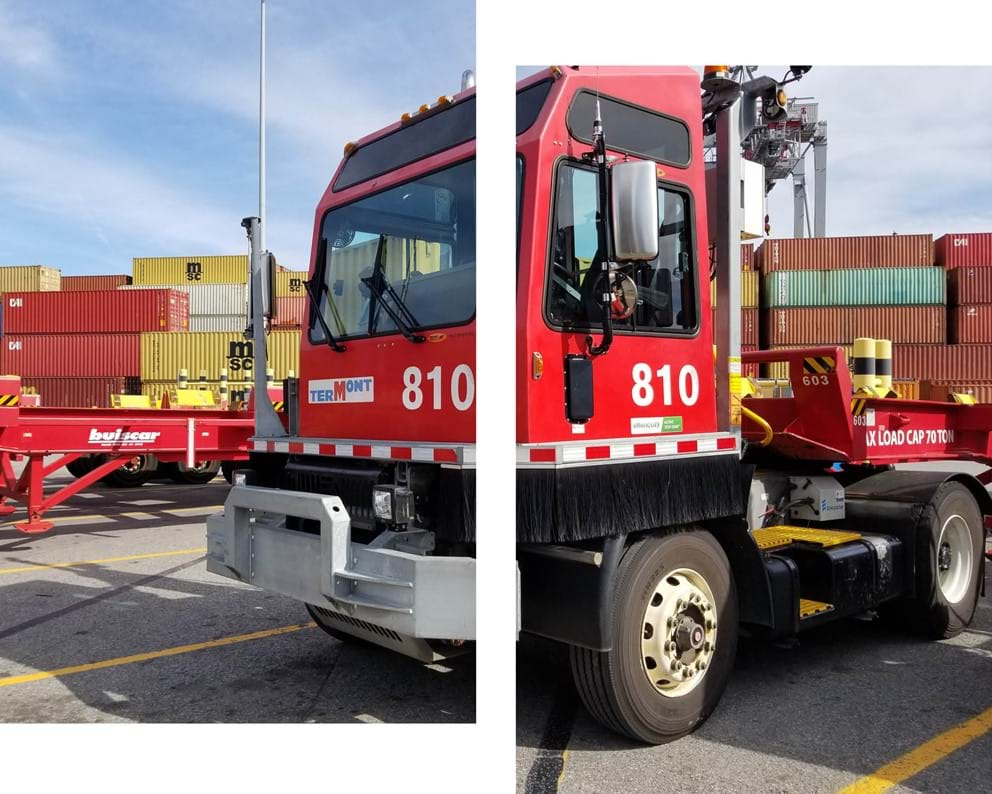
Prince Rupert Port Authority
The Prince Rupert Port Authority (PRPA) celebrated the completion of its Salt Marsh habitat restoration project in late April. The nearly $4-million project revitalizes the city’s Seal Cove area.
“Working with the City of Prince Rupert, we transformed an area that was degraded by long-term industrial use and restored its ecology with riparian habitat, shoreline rocks and vegetation, and a series of intertidal and tidal benches of transplanted eelgrass,” says Ken Veldman, PRPA’s Vice President of Public Affairs & Sustainability. “We also restored a portion of a nearby creek that was previously culverted.”
By partnering with the city, PRPA was at the same time able to develop the area as a recreational asset with pathways, lighting and benches.
PRPA undertook the project to compensate for the fish habitat disturbed in the course of building the Fairview Ridley Connector Corridor. The dedicated port road with additional rail sidings will service Fairview Terminal’s increasing container traffic.
“This private road will take all of the trucks hauling containers to and from the port off the provincial and municipal roadways in the Prince Rupert vicinity,” Veldman explains.
In addition to less wear-and-tear on public infrastructure, the corridor will reduce hauling distances by about 15 kilometres (9.3 miles), thereby also decreasing truck emissions.
The Salt Marsh will take three to five years to fully establish itself. “We’ll be involved in this critical monitoring over that time to ensure the project achieves its intended goals, after which the City of Prince Rupert will continue to look after it,” Veldman says.
